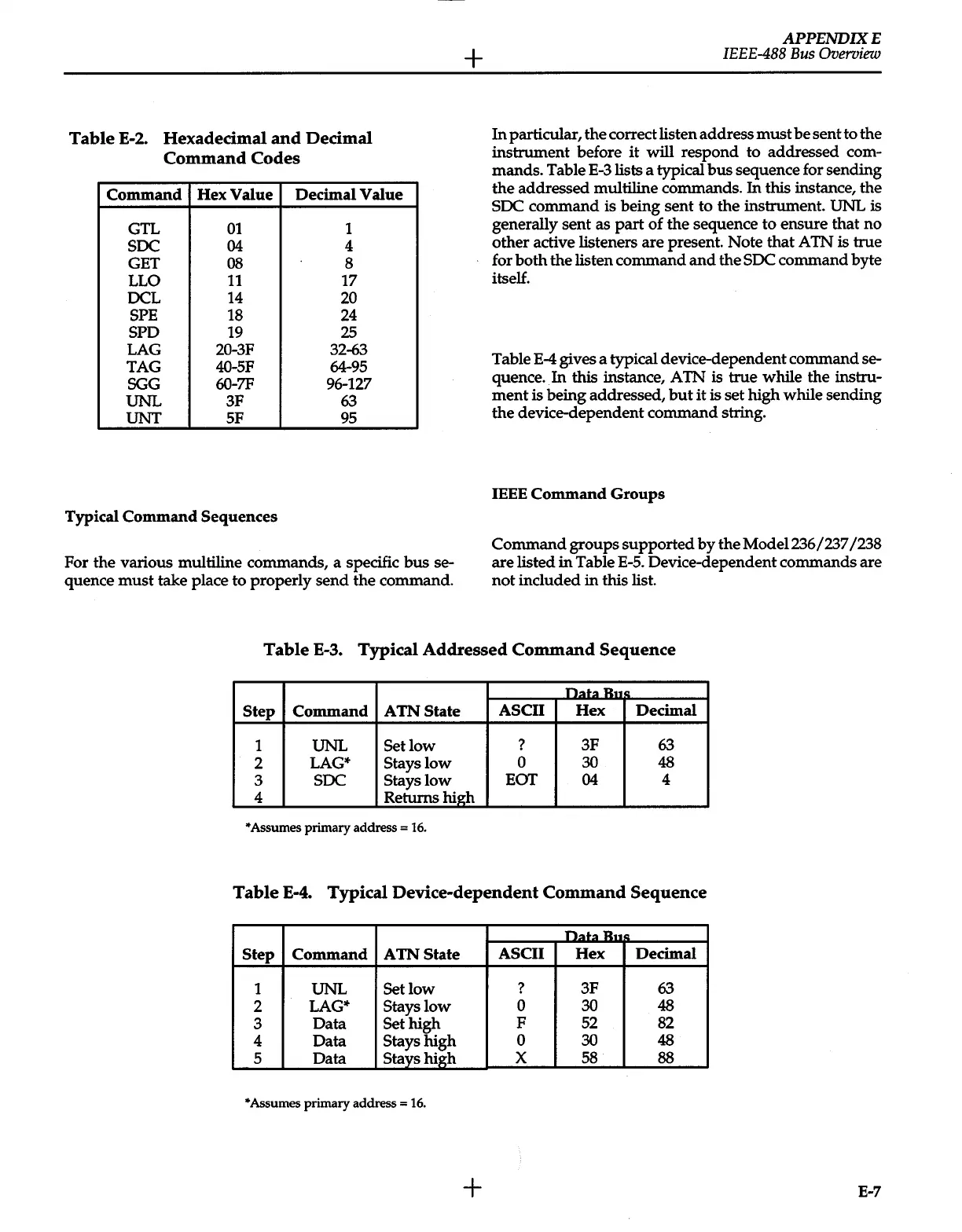Table
E-2.
Hexadecimal
and
Decimal
Command
Codes
Command
Hex
Value
Decimal
Value
GTL
01
1
soc 04 4
GET
08
8
LLO
11
17
OCL
14
20
SPE 18 24
SPD
19
25
LAG 20-3F 32-63
TAG
40-SF
64-95
SGG
60-7F 96-127
UNL 3F
63
UNT
SF
95
Typical
Command
Sequences
For
the
various multiline commands, a specific
bus
se-
quence
must
take place to properly
send
the
command.
+
APPENDIX£
IEEE-488 Bus Overview
In
particular,
the
correct listen address
must
be
sent to
the
instrument
before
it
will
respond
to addressed com-
mands. Table E-3lists a
typical
bus
sequence for sending
the
addressed multiline commands.
In
this instance,
the
SOC
command
is being
sent
to
the
instrument. UNL is
generally
sent
as
part
of
the
sequence to ensure
that
no
other active listeners are present. Note
that
ATN is
true
for
both
the
listen
command
and
the
SOC command byte
itself.
Table E-4 gives a
typical device-dependent command se-
quence.
In
this instance,
ATN
is
true
while
the
instru-
ment
is
being addressed,
but
it
is set high while sending
the
device-dependent
command
string.
IEEE
Command
Groups
Command
groups
supported
by
the
Model236/237 /238
are listed
in
Table E-5. Device-dependent commands are
not
included
in
this list.
Table
E-3.
Typical
Addressed
Command
Sequence
n::at:.
Rn~
Step
Command
ATNState
ASCII
Hex
Decimal
1
UNL
Set
low
? 3F 63
2
LAG* Stays
low
0 30 48
3
soc
Stays
low
EOT 04
4
4
Returns high
*Assumes primary
address=
16.
Table
E-4.
Typical
Device-dependent
Command
Sequence
n::at:.
Rn
Step
Command
ATNState
ASCII
Hex
Decimal
1
UNL
Set
low
? 3F
63
2
LAG*
Stays
low
0 30 48
3
Data
Set high
F 52 82
4 Data Stays
high
0
30
48
5 Data Stays
high
X 58 88
*Assumes primary
address=
16.
+
E-7
